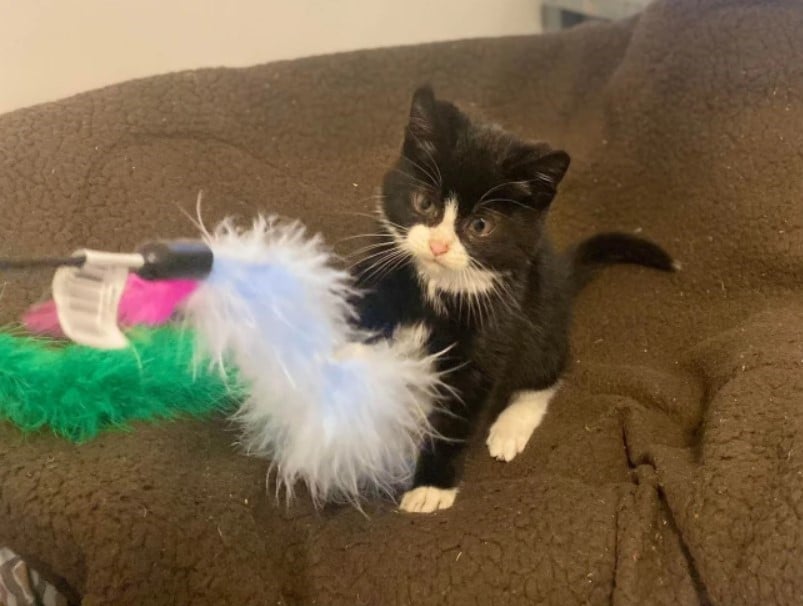A resilient, intelligent kitten in the United Kingdom seeking warmth from the winter cold survived a 250-mile journey under the hood of a truck.
The kitten, now named Yorkie after the driver’s favorite candy, crawled up into the truck as temperatures dropped. He then hitched a ride from Southampton to Merseyside with the truck’s unsuspecting driver. When the driver arrived at his destination, he noticed a noise coming from the hood of the truck. To his surprise, he found Yorkie near the engine, covered in oil.
The delivery driver immediately took the 9-week-old kitten to a local veterinarian. They quickly got to work cleaning off the oil and, miraculously, Yorkie was unscathed.
After getting help from the vet, the young kitten then got transported to Wirral and Chester’s Royal Society for the Prevention of Cruelty to Animals (RSPCA). Yorkie isn’t microchipped, so the RSPCA is still waiting to see if anyone claims him.
While we are overjoyed that this intrepid kitten survived this ordeal and is now in caring hands, Yorkie and his story hold some important reminders for cat guardians.
Now that winter has arrived, many stray cats may crawl up into car engines as they seek warmth and shelter. Below are five tips to ensure safety for you and for cats during the colder months:
- Before driving away, tap the hood of your vehicle. Wait a few seconds to see if any cat stowaways reveal themselves.
- Look underneath the car and on top of the tires. Most cats will flee if you make a noise.
- Cats who refuse to move may be injured, stuck, or scared. Call a local animal rescue organization for help if you need to physically remove a cat. Trying to do so on your own may result in injury for you or the cat, or damage to your car.
- Always microchip your companion animals! This allows local animal rescues to quickly identify them and bring them back to you if they ever get lost.
- If you are a cat guardian, please do not allow your feline to roam outdoors unattended. Roaming cats can suffer injuries, illness, and death, and they also are a leading cause of death to bird populations.








